TAPS
Transportable Purification System | 2025
MASTERS THESIS
About
This thesis presents a low-cost, portable solar still designed for humanitarian crises. The 12 kg, 60 x 60 cm unit uses passive solar evaporation, cotton wicking, and reflective surfaces to produce an estimated 4 litres of clean water per day. With a focus on repairability and scalable manufacturing, the system is projected to cost 34 USD at scale, delivering water at just 0.003 USD per litre over a seven-year lifespan. The device was experimentally tested in Singapore and theoretically analysed using Syrian climate data to suggest potential real-world performance.
Construction
Design Constraints
Max 60 cm wide
Max 10-15 kg
Ease of assembly & disassembly
Comparable in lifetime cost to trucked water delivery
Operated by a single person with minimal training
Yield at least 4 L per day (minimum drinking water for two people)
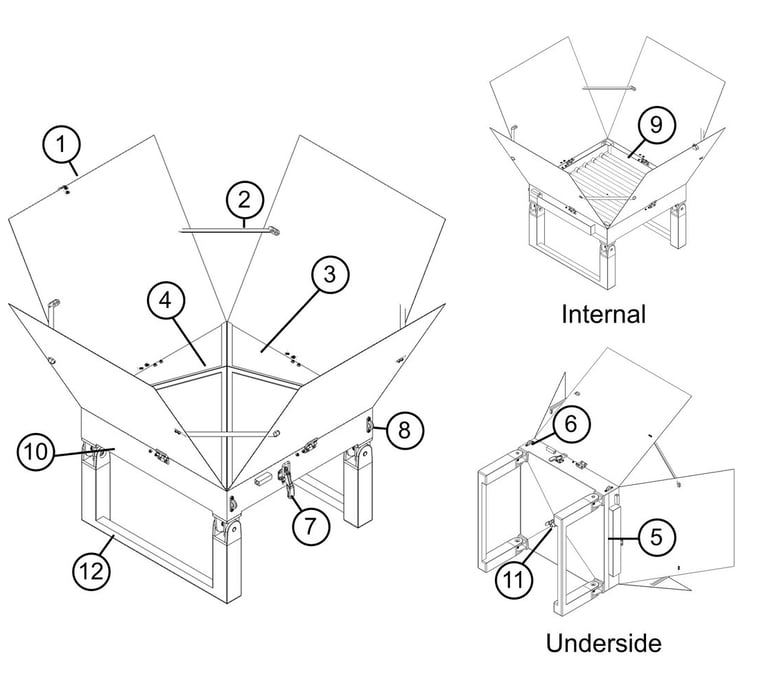



Component overview
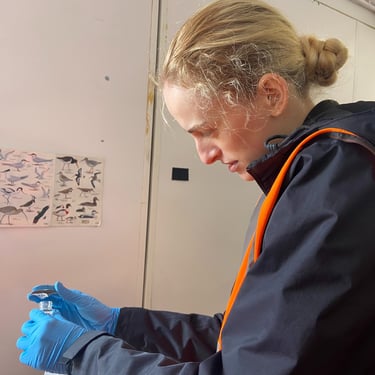
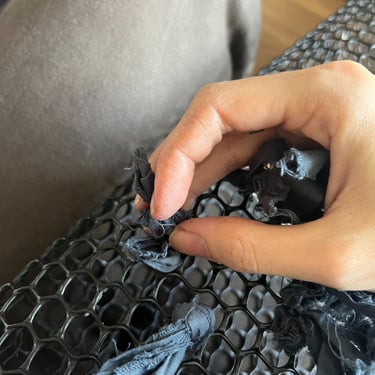
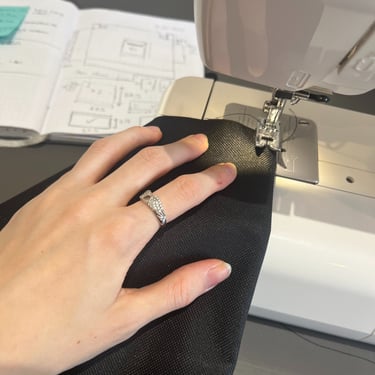

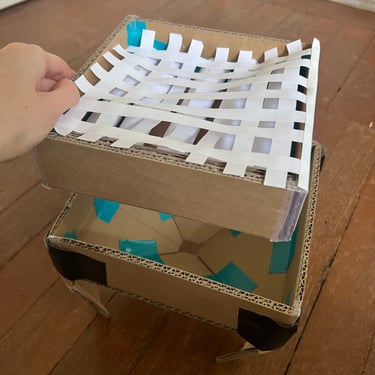
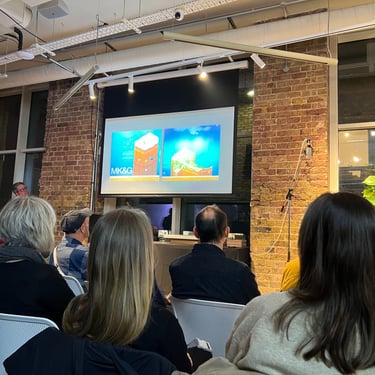
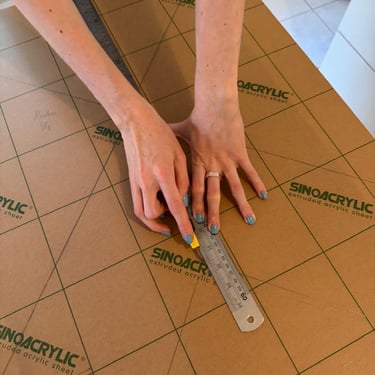

Development overview
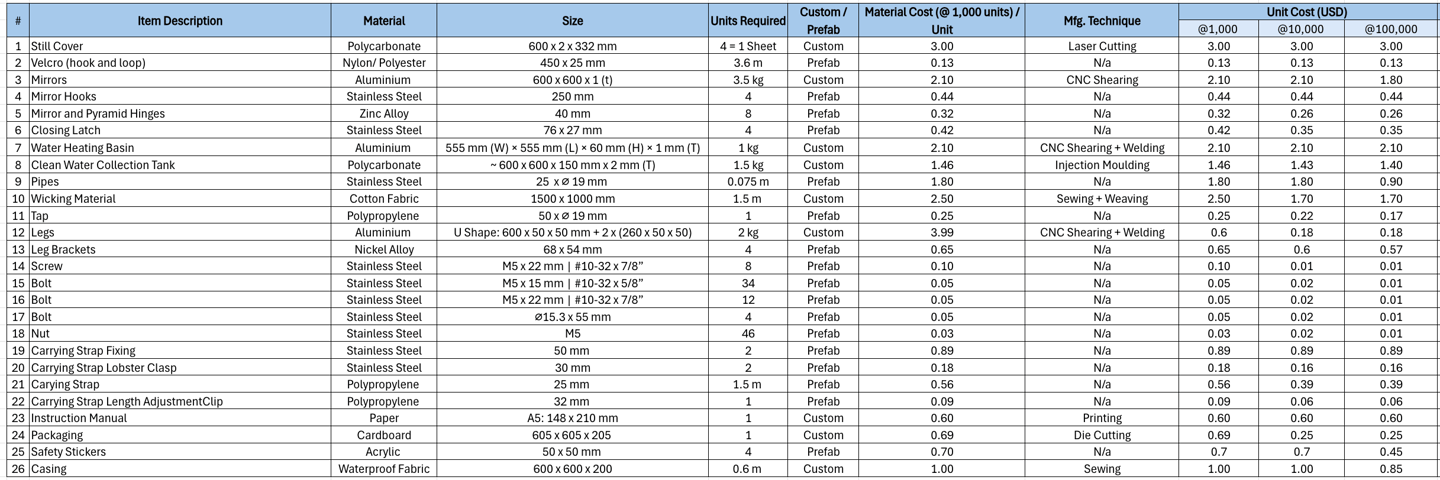

Bill of Materials (BOM)
Performance Evaluation
Thermal Performance
Water Yield
Methodology
Initial testing of the prototype was conducted in Singapore (spring 2025)
The prototype was positioned on a rooftop, free from obstructions and shade to ensure consistent solar exposure.
15 litres of room-temperature water were added to the still.
Internal water temperature was recorded at 15-minute intervals over a 9-hour period.
The probes from a dual thermocouple (±0.1℃ accuracy) were immersed in the water throughout the test.
The pyramid cover was not opened during the test to prevent the loss of accumulated heat and moisture, which could skew the temperature readings.
Methodology
A sous vide electric heater with built-in water circulation was used to heat approximately 15 L of water.
Temperature was controlled within ±0.1°C and set to match typical Singaporean conditions (27.6°C–68.8°C).
A dual-probe thermocouple was placed in the bulk water to confirm temperature accuracy.
After reaching each target temperature, a 20-minute stabilisation period was allowed for the water to reach thermal equilibrium.
The initial water height was measured using a ruler marked in millimetres.
Each test ran for four hours, allowing enough time for measurable evaporation.
The final water height was recorded.
Evaporated volume was calculated from the change in water level.


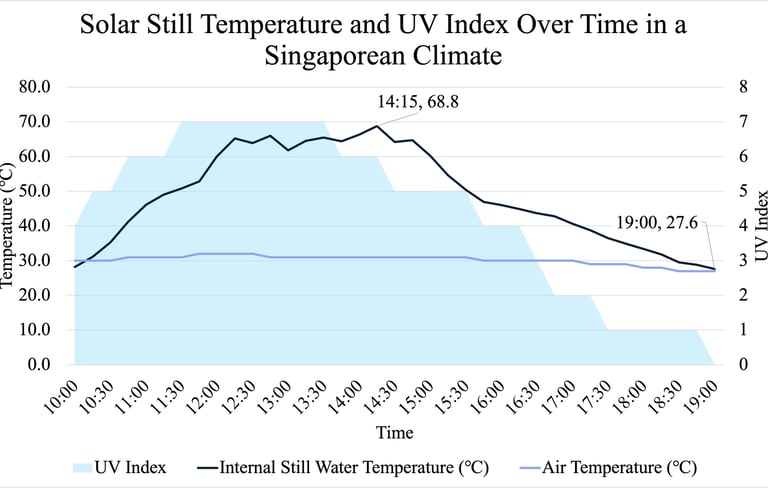

Testing setup
Results
Under Singaporean conditions, water temperature ranged from 27.6°C to 68.8°C, while air temperature ranged from 27°C to 32°C.
Peak water temperature (68.8°C) occurred at 14:15, with temperatures above 60°C sustained from 12:00 to 15:00.

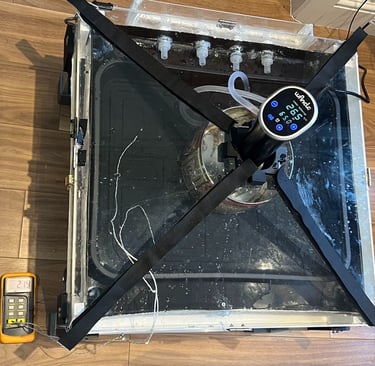
Testing setup
Results


Yield for the 9-hour experiment was estimated at ~4,100 mL, based on linear interpolation between tested temperature points.
Theoretical Maximum Yield (with Wicking):
Factoring in wicking (typically leads to a performance improvement of 25%), the maximum theoretical daily yield under Singaporean conditions is:
4,100 mL×1.25=5,125 mL/day
Relating Singapore & Syria
Based on existing literature defining the relations between climate parameters and yield a relative yield of 1.9 was defined between Singapore and Syria.

This suggests a maximum theoretical yield for TAPS in Syria of approximately 9.7 L per day. This allows for up to a 60% reduction in performance due to real-world inefficiencies e.g. vapour loss, dust accumulation, intermittent weather, measurement errors, and seasonal fluctuations, while still meeting the minimum yield requirement of 4 L per day.



